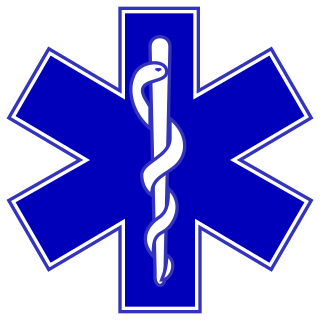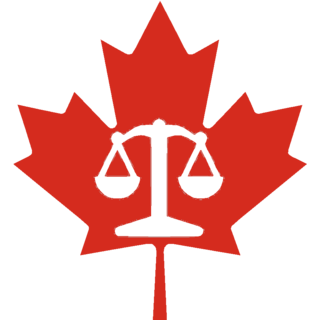
Trade dress is the characteristics of the visual appearance of a product or its packaging that signify the source of the product to consumers. Trade dress is an aspect of trademark law, which is a form of intellectual property protection law.
The trade mark law of Hong Kong is based on the Trade Marks Ordinance Cap. 559, which came into force on 4 April 2003 and repealed the Trade Mark Ordinance Cap 43 passed in 1873. The system established by this legislation is entirely separate to the system used in the People's Republic of China, pursuant to the "one country-two systems" policy. The superseded law and the current law share many similarities with the relevant legislation in the United Kingdom, a similarity which is also facilitated by TRIPs.

A trademark is a word, phrase, or logo that identifies the source of goods or services. Trademark law protects a business' commercial identity or brand by discouraging other businesses from adopting a name or logo that is "confusingly similar" to an existing trademark. The goal is to allow consumers to easily identify the producers of goods and services and avoid confusion.

A certification mark on a commercial product or service is a registered mark that enables its owner to certify that the goods or services of a particular provider have particular properties, e.g., regional or other origin, material, quality, accuracy, mode of manufacture, being produced by union labor, etc. The standards to which the product is held are stipulated by the owner of the certification mark.
An electronic signature, or e-signature, is data that is logically associated with other data and which is used by the signatory to sign the associated data. This type of signature has the same legal standing as a handwritten signature as long as it adheres to the requirements of the specific regulation under which it was created.

The Trade Marks Act 1994 is the law governing trade marks within the United Kingdom and the Isle of Man. It implements EU Directive No. 89/104/EEC which forms the framework for the trade mark laws of all EU member states, and replaced an earlier law, the Trade Marks Act 1938. Although the UK's trade mark regime covers the Isle of Man, it does not extend to the Channel Islands which have their own trade mark registers.
The Uniform Domain-Name Dispute-Resolution Policy (UDRP) is a process established by the Internet Corporation for Assigned Names and Numbers (ICANN) for the resolution of disputes regarding the registration of internet domain names. The UDRP currently applies to all generic top level domains, some country code top-level domains, and to all new generic top-level domains.

United Kingdom trade mark law provides protection for the use of trade marks in the UK. A trade mark is a way for one party to distinguish themselves from another. In the business world, a trade mark provides a product or organisation with an identity which cannot be imitated by its competitors.

The Star of Life is a symbol used to identify emergency medical services. It features a blue six-pointed star, outlined by a white border. The middle contains a Rod of Asclepius – an ancient symbol of medicine. The Star of Life can be found on ambulances, medical personnel uniforms, and other objects associated with emergency medicine or first aid. Elevators marked with the symbol indicate the lift is large enough to hold a stretcher. Medical bracelets sometimes use the symbol to indicate one has a medical condition that emergency services should be aware of.
A non-conventional trademark, also known as a nontraditional trademark, is any new type of trademark which does not belong to a pre-existing, conventional category of trade mark, and which is often difficult to register, but which may nevertheless fulfill the essential trademark function of uniquely identifying the commercial origin of products or services.
A colour trade mark or color trademark is a non-conventional trade mark where at least one colour is used to perform the trade mark function of uniquely identifying the commercial origin of products or services.
Disparagement, in United States trademark law, was a statutory cause of action which permitted a party to petition the Trademark Trial and Appeal Board (TTAB) of the Patent and Trademark Office (PTO) to cancel a trademark registration that "may disparage or falsely suggest a connection with persons, living or dead, institutions, beliefs, or national symbols, or bring them into contempt or disrepute". In 2017, the Supreme Court struck down the disparagement provision as unconstitutional in Matal v. Tam.

Canadian trademark law provides protection to marks by statute under the Trademarks Act and also at common law. Trademark law provides protection for distinctive marks, certification marks, distinguishing guises, and proposed marks against those who appropriate the goodwill of the mark or create confusion between different vendors' goods or services. A mark can be protected either as a registered trademark under the Act or can alternately be protected by a common law action in passing off.
Scams in intellectual property include scams in which inventors and other rights holders are lured to pay money for an apparently official registration of their intellectual property, or for professional development and promotion of their ideas, but do not receive the expected services.

A trademark is a type of intellectual property consisting of a recognizable sign, design, or expression that identifies a product or service from a particular source and distinguishes it from others. A trademark owner can be an individual, business organization, or any legal entity. A trademark may be located on a package, a label, a voucher, or on the product itself. Trademarks used to identify services are sometimes called service marks.
The trademark symbol™ is a symbol to indicate that the preceding mark is a trademark, specifically an unregistered trademark. It complements the registered trademark symbol ® which is reserved for trademarks registered with an appropriate government agency.

Iran is a member of the WIPO since 2001 and has acceded to several WIPO intellectual property treaties. Iran joined the Convention for the Protection of Industrial Property in 1959. In December 2003 Iran became a party to the Madrid Agreement and the Madrid Protocol for the International Registration of Marks. In 2005 Iran joined the Lisbon Agreement for the Protection of Appellations of Origin and their International Registration, which ensures the protection of geographical names associated with products. As at February 2008 Iran had yet to accede to The Hague Agreement for the Protection of Industrial Designs.
A sound trademark, sound logo, or audio logo is a trademark where sound is used to perform the trademark function of uniquely identifying the commercial origin of products or services.

Indian trademark law statutorily protects trademarks as per the Trademark Act, 1999 and also under the common law remedy of passing off. Statutory protection of trademark is administered by the Controller General of Patents, Designs and Trade Marks, a government agency that reports to the Department of Industrial Policy and Promotion (DIPP), under the Ministry of Commerce and Industry.

An unregistered trademark or common law trademark is an enforceable mark created by a business or individual to signify or distinguish a product or service. It is legally different from a registered trademark granted by statute.







